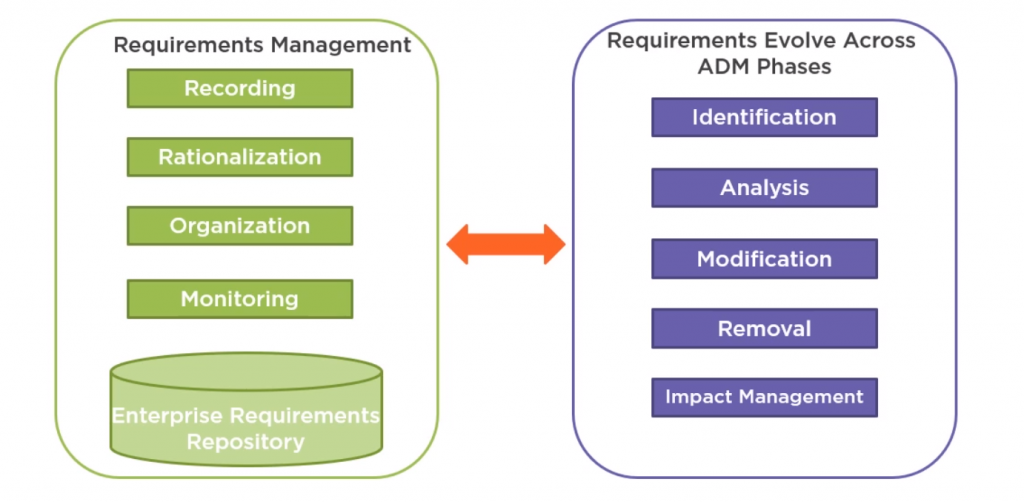Objectives
After going through Phases A-H it is time to take a look into central part of ADM – Architecture Requirements Management.
Looking at the ADM phases you may think why Architecture Requirements Management is in the center of ADM diagram. The answer is simple: You need to ensure that this process is sustained and operates for all relevant ADM phases, not only one the beginning of the ADM. Changing requirements determine the speed of modern business development. They must be identified, stored, and fed into and out of the relevant ADM phases, and also between cycles of the ADM.
Approach
Requirements are produced, analyzed and reviewed in each of the phases of the ADM. The Requirements Management Phase describes the process of managing these architecture requirements throughout the ADM. Best summarise it the image below:

Note also that the requirements management process itself does not dispose of, address, or prioritize any requirements: this is done within the relevant phase of the ADM. It is merely the process for managing requirements throughout the overall ADM.
Techniques
One of the artefacts, that can be produced is Requirements Impact Assessment. Typical content:
- Reference to specific requirements.
- Stakeholder priority of the requirements to date.
- Phases to be revisited.
- Phase to lead on requirements prioritization.
- Results of phase investigations and revised priorities.
- Recommendations on management of requirements.
- Repository reference number.
Inputs
Inputs to the Requirements Management phase are:
- A populated Architecture Repository.
- Organizational Model for Enterprise Architecture.
- Tailored Architecture Framework.
- Statement of Architecture Work.
- Architecture Vision.
- Architecture requirements, populating an Architecture Requirements Specification.
- Requirements Impact Assessment.
Outputs
Architecture Requirements Specification
The Architecture Requirements Specification provides a set of quantitative statements that outline what an implementation project must do in order to comply with the architecture. An Architecture Requirements Specification will typically form a major component of an implementation contract or contract for more detailed Architecture Definition.
Requirements Impact Assessment
A Requirements Impact Assessment assesses the current architecture requirements and specification to identify changes that should be made and the implications of those changes.

Thank you so much! It a astonishing web site!
This is a topic that is near to my heart Thank you! Where are your contact details though? try to visit my site
What’s up, this weekend is pleasant in support of me, since this moment i am reading this impressive informative piece of writing here at my home